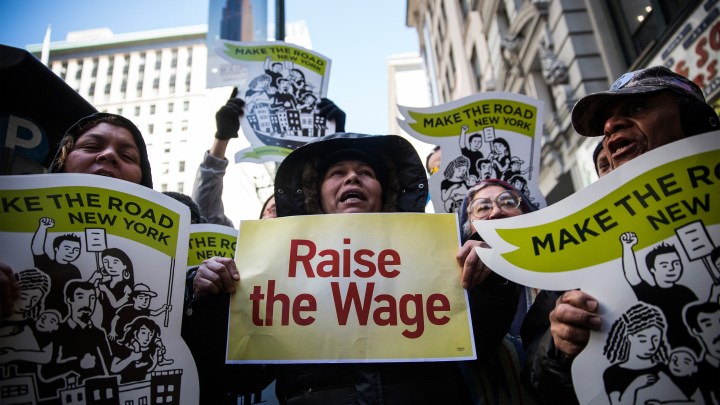
Where’s the wage growth?

The Labor Department’s monthly employment report showed employers added 45,000 new jobs in December 2019, while the unemployment rate held steady at 3.5%, a 50-year low.
But wage gains were disappointing. Average hourly earnings of private-sector employees rose 2.9% year over year in December. The rate of growth hovered just above 3% for most of 2019.
With unemployment so low, economists expect employers to be under more pressure to increase pay.
“Lack of wage growth has been the biggest puzzle for the last several years,” said economist Aparna Mathur at the American Enterprise Institute.
Mathur said that even with the official unemployment rate so low, there is still significant slack in the labor market: millions of long-term unemployed, part-time workers looking for full-time work, and people on the sidelines ready to jump into the workforce.
“The more people who keep entering,” said Mathur, “the less pressure on employers to pay higher wages.”
Plus, a lot of the jobs created since the Great Recession have been in service industries, she said. “The kinds of work that people are finding may be contingent, contractual — not high-wage jobs with benefits.”
Where employees do get benefits like health insurance, the cost is rising, eating into what employers have left for raises.
But this isn’t just a last-few-years story. Wage growth was even lousier, in the 1.5% to 2.5% range, through most of the past decade, according to data compiled by the Federal Reserve Bank of St. Louis.
Economist Elise Gould at the Economic Policy Institute said the depth of the Great Recession and the slow pace of the economic recovery depressed wage growth for years. And she also pointed to longer-term economic changes: “The reduced leverage that workers have — the decline in unionization, the declining value of the federal minimum wage.”
Economist Mark Zandi at Moody’s Analytics said that the sluggish wage growth of the last decade is in line with weak worker-productivity growth. He pointed out that since inflation has been relatively low, even moderate wage gains are delivering more purchasing power to workers.
Zandi speculated that in the past couple years, the escalating trade war with China has undermined business confidence and made employers hesitant to hike pay.
“Now that we have a truce in the trade war,” Zandi said, “businesses may start to feel a little bit better about things, and we should see wage growth begin to pick up again.”
There’s a lot happening in the world. Through it all, Marketplace is here for you.
You rely on Marketplace to break down the world’s events and tell you how it affects you in a fact-based, approachable way. We rely on your financial support to keep making that possible.
Your donation today powers the independent journalism that you rely on. For just $5/month, you can help sustain Marketplace so we can keep reporting on the things that matter to you.


















